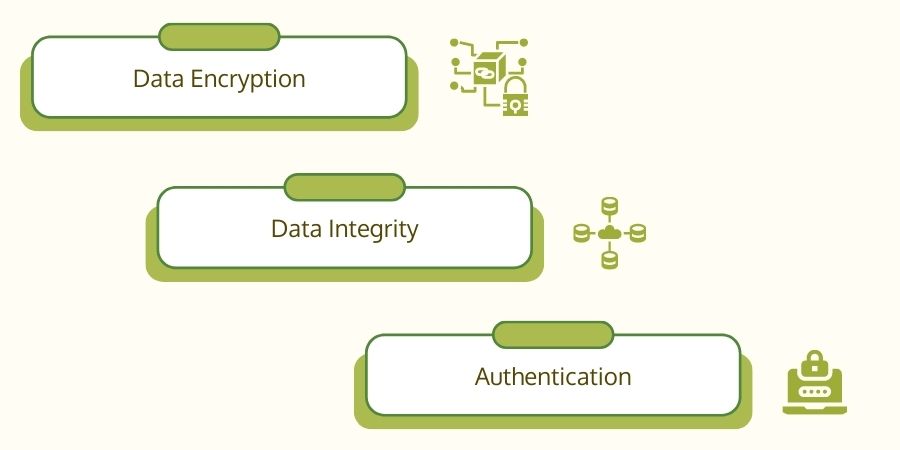
Introduction
You might have seen or heard security researchers emphasizing that online users should prefer using HTTPS sites instead of HTTP. Why this differentiation? The security attack landscape is inflating like never before. Cyber attacks, data breaches, and privacy leaks are becoming more sophisticated and frequent.
So, all the data we transmit or receive over the internet should remain encrypted from the web server to the client software. All thanks to HTTPS. HTTPS caters to an additional layer of security via SSL. If you want to know more about HTTP vs. HTTPS and how HTTPS works to keep our entire data transaction safe while using the internet, this article is for you. Without further ado, let's jump straight into the facts and concepts of HTTP and HTTPS. We will also explore the essential points for HTTP vs. HTTPS.
What is HTTP, and Why Isn't It Secure?
Hypertext Transfer Protocol (HTTP) is the core application layer protocol that governs the hypertext flow on the World Wide Web (WWW). HTTP runs on port 80. It loads web pages using hypertext links, a 15-year-old method and uses a particular client-server mechanism to transmit and receive information in plain text between networked devices. That is why it is prone to data breaches and privacy leakage.
How Does HTTP Operate?
In this method, the user initiates an HTTP request through the browser called the client request that the web server takes to respond, called the server response. In both the request and the response, the data remain unencrypted. Hence, anyone who intercepts or peeps into the communication gets to know what data is in the transmission.
What is HTTPS, and Why is HTTPS Important?
Hypertext Transfer Protocol Secure (HTTPS) is a portmanteau of HTTP and Secure Socket Layer (SSL) (now known as Transport Layer Security (TLS)) that works similar to HTTP but with a secure and encrypted data layer for transmitting and receiving data over the WWW. It runs on port 443. Because of HTTPS, it becomes secure to transfer money online, transact through credit cards, authenticate using passwords, etc. HTTPS is essential to communicate securely without revealing data to the intercepting party or adversaries performing a Man-in-the-Middle (MiTM) attack. HTTPS leverages SSL protocol and the security certificate with three protection layers:

- Data encryption from client to server and vice versa;
- Data integrity guarantees that your data will not get modified or corrupted during transit without getting detected; and
- Authentication affirms whether you're communicating with the legitimate and intended website.
What is the Difference between HTTPS and HTTP?
Let us now dig into the difference between HTTP vs. HTTPS.
| HTTP | HTTPS |
|---|---|
| HTTP transfers data in plain text and is not secure. | HTTPS transfers data in encrypted text (ciphertext) and is secure |
| It runs on port 80. | It runs on port 443. |
| It is suitable for websites that have static content like blogs and articles. | It is ideal for websites with dynamic content like registration pages, login pages, online transactions, e-commerce sites, etc |
| HTTP does not scramble your data during transmission from one system to the other. This increase the possibility of your information getting breached by cybercriminals. | HTTPS runs your data during transmission from one system to the other. Thus, information transmitted through the WWW remains secure, and cybercriminals cannot breach it with malicious intentions. |
| HTTP is comparatively faster than HTTPS. | HTTPS is comparatively slower than HTTP. |
| HTTP does not help in improving search ranking and SEO. | HTTPS helps in improving search ranking and SEO. |
| HTTP works at the application layer of the TCP/IP model. | HTTPS works at the transport layer of the TCP/IP model. |
Frequently Asked Questions
Is HTTPS Secure?
Yes, HTTPS is way more secure than HTTP because it uses SSL, containing a security certificate that remains verified by the certificate authority. It also provides encryption; thereby, anyone who wants to eavesdrop on the data in communication will not be able to read or extract the data transmitted between the sender and the receiver.
Is HTTPS Encrypted?
Yes, HTTPS is encrypted with asymmetric key encryption that Transport Layer Security (TLS) provides. This protocol is responsible for providing security to HTTP-based data transmission.
How Does the SSL Certificate Work?
Here is a set of steps SSL employs to connect to the system. The web browser or the client application attempts to connect to the website or the server by leveraging the SSL protocol. Once the web server identifies itself, it sends the web browser a copy of the SSL certificate. The browser checks whether it can trust the SSL certificate. If accepted & verified, it sends back an acknowledgment to the web server. The web server then sends a digitally signed message that enables the entire communication to start an encrypted SSL session. Once such verification gets established, the browser and the server can share encrypted data between them.

 Batoi Corporate Office
Batoi Corporate Office